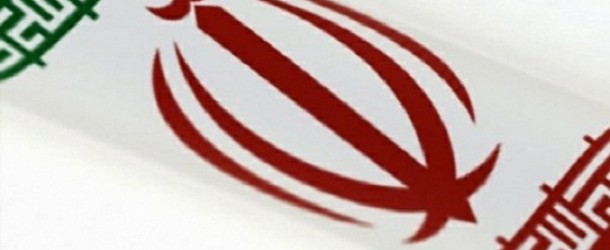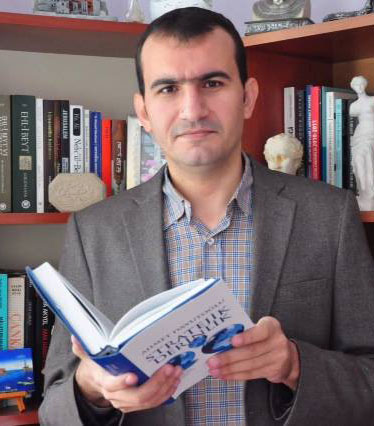Certain changes in the foreign policy of the official Tehran is speculated upon and its performance in the Central Asia direction is a separate subject. This is a region where Iran has traditionally played an important role and the issue has grown in relevance in light of more intensive geopolitical struggle. Experts are interested in certain aspects of Iran’s relations with the Central Asian nations and Tehran’s expectation.
Escaping Isolation: Central Asia’s Role
Central Asia has historically been geopolitically and religiously important region for Iran. In the current phase this region has become a key priority for Tehran’s foreign policy. Experts who address this subject are highlighting that first and foremost, Iran is searching for ways of escaping isolation (see: Ирина Звягельская.В поисках точки опоры: Иран в Центральной Азии / РСДМ, 12 November 2014).
Choice of the region for that purpose makes sense. Countries in the Central Asia have traditionally shared close relations with Iran. Country like Tajikistan shares ethnic affinity with the Iranians. Moreover, Persian-speaking groups are also present in Uzbekistan and Afghanistan. In the meantime, religious factor must not be ruled out. Nevertheless, official Tehran is acting cautiously within its foreign policy and aims not to distance the peoples of the region (see: previous reference).
This totally conforms to the course of avoiding isolation. Iran is gradually implementing programs with the regional countries that cover different areas. Still, they are not equally beneficial for all of the countries. For Tehran, finding common ground with Tajikistan is quite easy and there are high-level relations with this country in place. Trilateral economic cooperation commission between Iran, Tajikistan and Afghanistan was established back in 2006. At that time, then President M. Ahmadinejad stressed that security of all the three nations is closely interconnected (see: Сергей Мутов. Политика Ирана в отношении Центральной Азии / ”Мир и Политика”, 10 August 2014).
Other than that, Iran invested $50-60 million in the tunnel construction in the mountains of Tajikistan. Tehran also invested $220 million in the construction of “Sangtudin” hydroelectric plant and provided assistance of $31 million for construction of Anzob tunnel (see: previous reference). Yet this has proven insufficient for Iran to become Tajikistan’s main partner. According to experts, Russia and China have managed to build much broader cooperation with Dushanbe. Certainly, this does not diminish Iran’s importance for Tajikistan. Once Iran escapes international isolation, its ties with Dushanbe could elevate to the next level.
Unlike with Tajikistan, Iran’s relations with Uzbekistan are of contentious nature. This is a combination of positive and negative factors. Despite the significance attached by the official Tehran to this country and intensity of the diplomatic exchange, some projects, mainly in the transportation sector, were not implemented. Experts believe that this was associated with the fact that until 2005, Tashkent was among the U.S.’s priorities and the nation was exercising cautious policy on Islam.
Iran is expanding its relations with Turkmenistan. According to the 2012 statistics, Iran ranks third after Russia and China as Turkmenistan’s cooperation partner (see: Обзор внешнеэкономических связей Туркменистана / Ved.gov.ru). Russian expert S. Mutov contends that Iran is pursuing totally pragmatic objectives it its relations with Turkmenistan and aims to benefit from natural resources of neighboring nations. In the meantime, Ashkhabad’s geopolitical stance is extremely important. And finally, it has to be acknowledged that significant number of Turkmens inhabit Northern provinces of Iran (see: Сергей Мутов.Политика Ирана в отношении Центральной Азии / ”Мир и Политика”, 10 August 2011).
Although experts believe that Iran’s relations with Kazakhstan are friendly, Astana’s multi-vector foreign policy course compounds ties with Iran. However, Tehran possesses no economic leverages over Astana, while geopolitical interest toward this nation is great. Kazakh expert M. Gubaydulina underscores that Astana bears “strategic importance” for Tehran “in terms of broader regional cooperation”. And owing to this factor, the relations between the two countries are likely to develop (see: Эксперт: Транзитный потенциал Ирана должен быть приоритетом для Средней Азии – доклад / “Regnum”, 23 October 2013).
There is nothing notable about Iran-Kyrgyzstan relations. Economic relations might be satisfactory but Iran is still trailing Russia, China and Turkey in terms of cooperation. Kyrgyzstan and Iran are cooperating mainly within international organizations. Bishkek’s geopolitical relevance for Iran has grown with the upcoming NATO troop pullout from Afghanistan. According to Gubaydulina, Iran-Kyrgyzstan relations of today are of “working and friendly nature” (see: previous reference). Presumably, Iran will try to expand its outreach in this direction.
Big Powers: Geopolitical Balancing Act
Apparently, Iran has managed to secure a certain geopolitical and economic position in the Central Asia. In the meantime, it is not challenging Russia, China and the U.S. in terms of regional leadership. Iran might be right in this aspect because its resources are much more limited. Yet, Tehran is consistently advancing towards its strategic objective by attaching significance to bolstering of economic and cultural ties with the nations of the region.
Let us also not forget that based on religious considerations, the Central Asian states could choose to side with Iran in critical situations. Perhaps this is why Iran is focusing not on political and economic but social-cultural aspects for expanding its presence in the region. This issue is primarily associated with the Russia, China and U.S. factors. In the event of closer rapprochement process between Iran and America, the two countries could become partners in the Central Asia. And experts are optimistic about chances of establishment of direct exchange between them. Russian expert V. Sajyn believes that America is eagerly interested in the resolution of Iran’s nuclear problem (see: 2014 год переломный для Ирана? / РСДМ, 28 October 2014).
In the meantime, speculations are that Iran may relegate its partnership with Russia as Tehran attaches new substance to its relations with the West. Testimony to that could be conflicting messages coming from Tehran regarding energy cooperation with the West (see: Президент Ирана Х.Роухани вопреки двойным играм Запада отодвигает партнерство с Россией на второй план/ Panorama.am, 10 November 2014).
When it comes to China, relations with this country are built in a different direction. Tehran and Beijing prefer to concentrate on transportation and energy projects. Iran realizes that it is quite challenging to compete with China in the Central Asia. However, Tehran acquires a powerful partner by supporting Beijing’s geopolitical and economic initiatives, which include establishment of a development bank within the Shanghai Cooperation Organization (see: Иран и ШОС: неоправданное безразличие / Iran.ru, 8 September 2014).
Therefore, with all the aforementioned in the background, the idea of the year 2014 being the turning point for Iran sounds compelling. If Tehran will succeed in normalizing its ties with the West the forecast would be justified and new dynamics would be introduced to the vast geopolitical region. Moreover, the issue will not be limited to Central Asia as significant novelties in the global politics may surface. Nevertheless, it is quite difficult to use affirmative terms when describing the outcome of these predictions.
























































